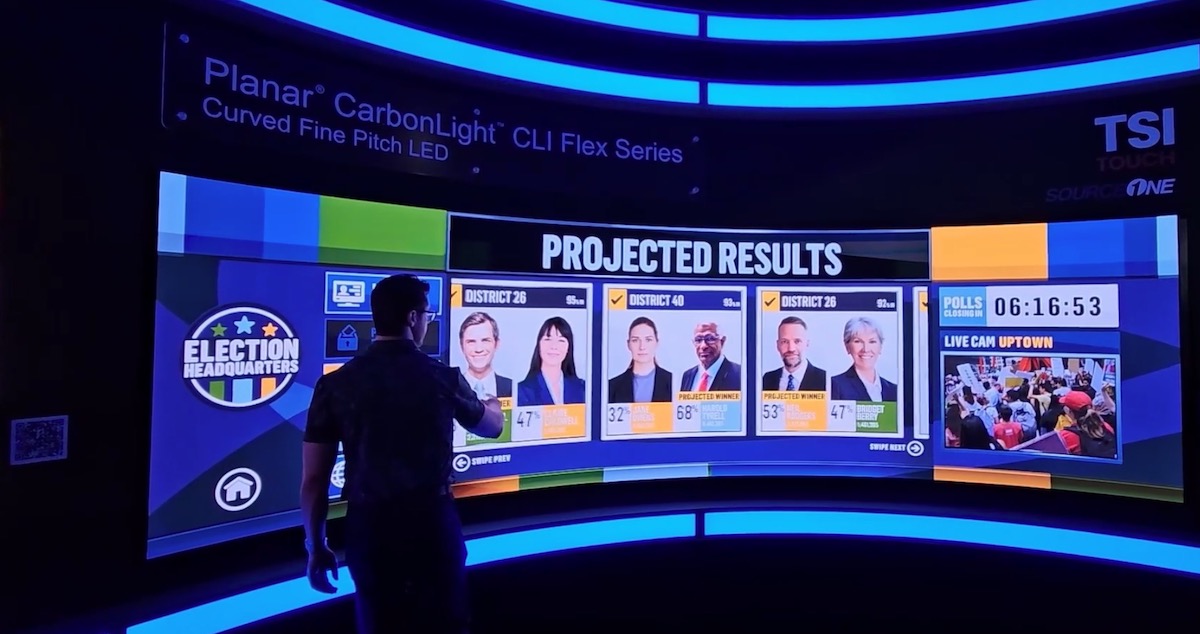
Did You Know A Curved LED Wall Could Support Touch? Me Neither …
April 25, 2024 by Dave Haynes
When finer pitch LED video wall tech started coming on the market, one of the knocks other than the big one – high cost – was how the technology would not support touchscreen interactivity. The little light emitters were easily damaged or even knocked off, so big video walls were often roped off or had full-time minders keeping people back.
That was predictably solved with time and product evolution, and coatings and different manufacturing methods mean it’s now OK for people to touch at least some of the video wall product on the market. The main method used has been infrared touch – basically sensor frames around the edges of a display that pick-up and locate pointing digits near a screen. But that’s something that worked just for flat surfaces.
Or so I thought …
Here’s a video from the recent NAB broadcast tech show in Las Vegas, showing a curved 0.9mm pitch LED display made by Planar, equipped with IR touch from TSI Touch, that fully works on that curved surface. Each flexible LED module has a protective coating, and the flexible nature of the product allows for the curve.
TSI Touch explains IR touch this way:
Infrared touchscreen technology functions by utilizing a grid of infrared LED and photodetector pairs along the screen’s edges or borders. When a user’s touch disrupts the infrared light beams, the corresponding photodetectors detect this interruption, allowing the system to pinpoint the touch location.
By analyzing the data from multiple interrupted beams, the technology calculates the precise coordinates of the touch. This information is then translated into user input, enabling interaction with the device. Infrared touchscreens are known for their durability, accuracy, and ability to work with various input methods.
I don’t know how the IR works on a curve (guessing more “photodetectors” than on a flat surface, but as the video shows, it does …



Weather Talent will LOVE this!
This is going to change the game for many applications. From command centers to broadcasting. Exciting stuff!
Touch on a curve is actually simpler than you think. IR emitters top and bottom that basically turn off and on 120 times per second in phases. The receivers expect to “see” a certain emitter at certain times. If they don’t they kind of triangulate where the touch point is on the wall. Quite precise.
I own a small sign company. Trying to get bigger.